This blog post will show you how to cook black lentils in one pot and with simple ingredients.
They are small, round, black-colored lentils with an earthy taste and a firm texture. For more lentil recipes try our black lentil Dal, lentil curry, and lentil stew.
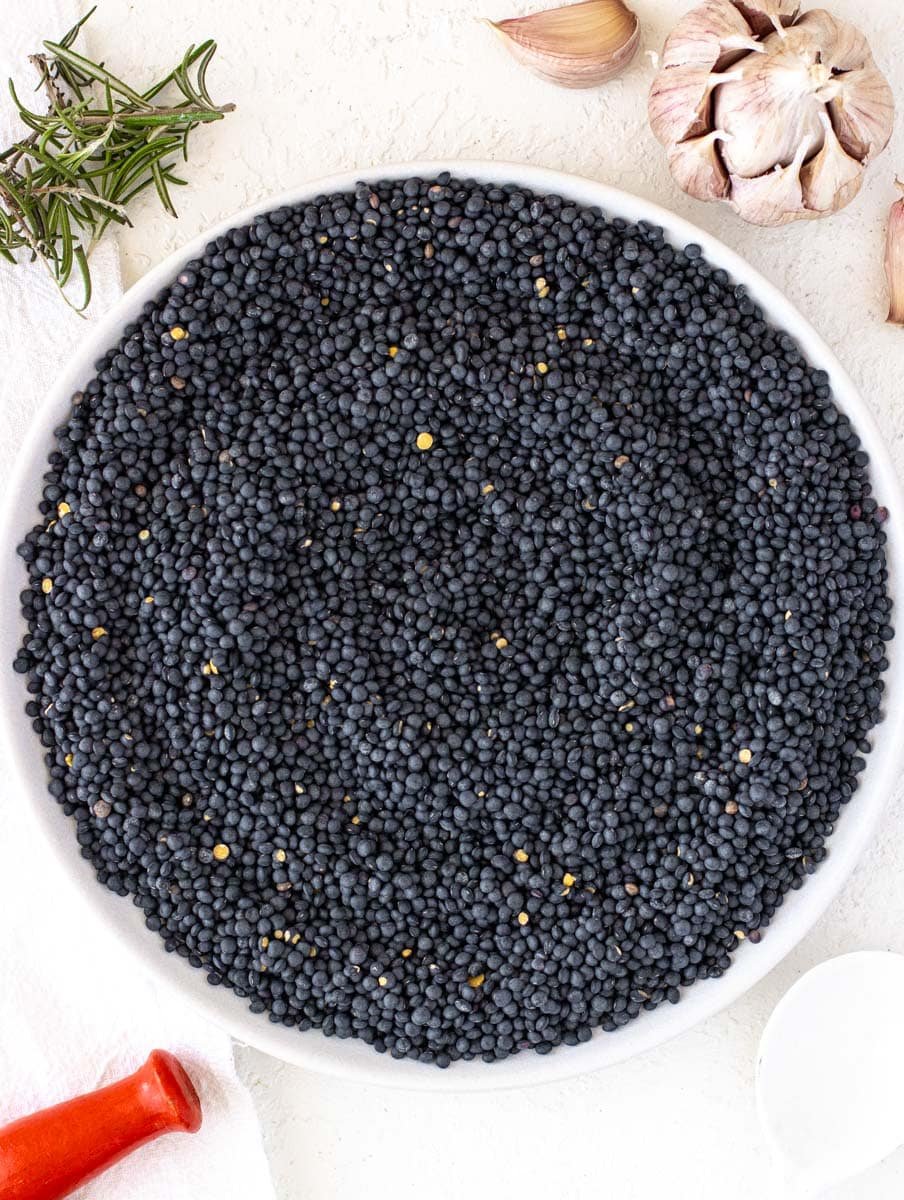
Don’t have time to read the full blog post? JUMP TO RECIPE HERE!
What are black lentils?
Black lentils, also known as beluga lentils, have quickly become a staple in our kitchen because they are packed with plant-based protein, fiber, and nutrients.
Their black color is given by anthocyanin, a potent antioxidant also found in blueberries and black rice.
You’ll love their rich and earthy taste and their versatility. They are easy to cook and don’t require soaking.
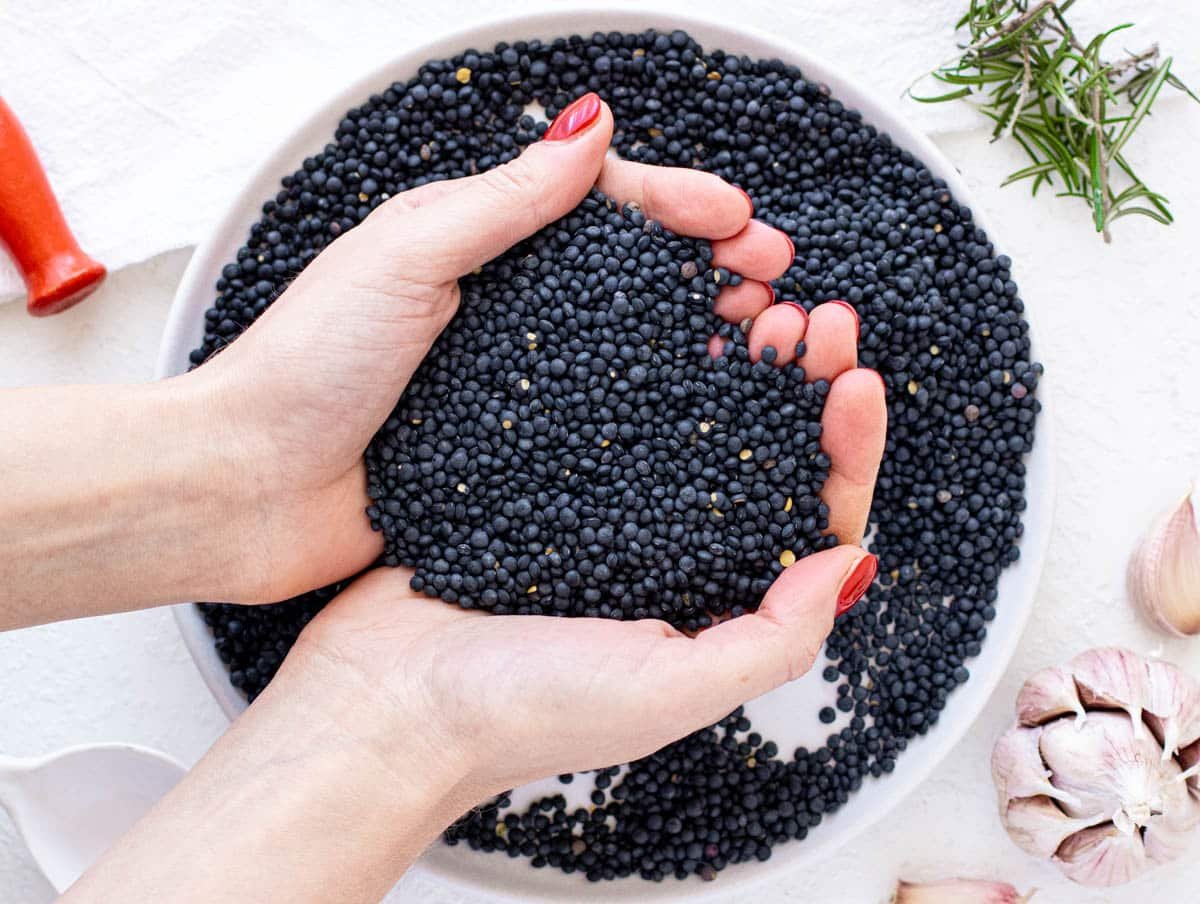
And because black beluga lentils keep their shape well, they are excellent for meal prep.
Keep them in an airtight container for up to a week, and add them to your favorite dishes when you need a boost of wholesome plant protein.
We love them on toasted bread, in wraps, and burritos. Try them in bowls and salads or stirred into soups and stews to add flavor and substance.
And while there are many ways to cook this delicious legume, here we’ll show you how to braise black lentils in one pot and with simple pantry staples.
Tip: to learn how to boil black lentils in water, check out our how to cook lentils guide.
Ingredients & Substitutions
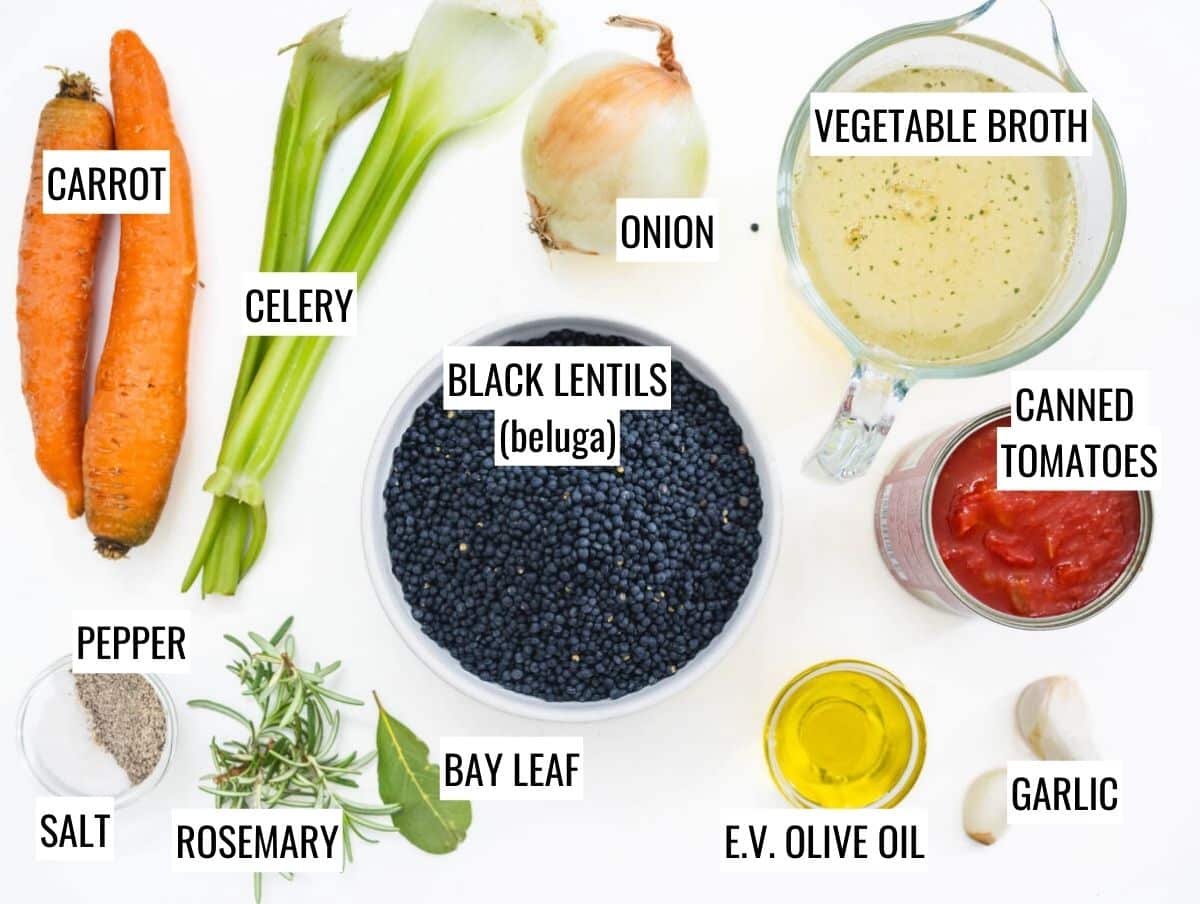
Quantities are in the recipe box at the bottom of the page.
Black lentils
You can find black lentils (also known as beluga lentils due to their resemblance to black caviar) in larger grocery stores, organic and health stores, or Asian stores.
They are most often sold dry; we have never seen them canned.
You can substitute other dry lentils like French green lentils, brown lentils, or whole red lentils (not split red lentils).
Flavor base
A simple flavor base made with extra virgin olive oil, carrot, celery, onion, and garlic enhances the rich and earthy flavor of the black lentils, adding sweet and fresh flavors.
These aromatic vegetables should be coarsely chopped and gently cooked in the olive oil for 5 to 10 minutes.
Aromatic herbs
Sturdy fresh herbs like rosemary sprigs and bay leaves pair perfectly with beluga lentils.
Other herbs that you can use are sage leaves and thyme.
Substitute dry herbs for fresh ones. You can even use an Italian herb mix if you only have that in your pantry.
If you want to add Eastern flavors, we recommend spices like cumin, coriander, and turmeric.
Vegetable broth
You can use water or vegetable broth to simmer the lentils.
Tomatoes (optional)
You can add diced or crushed canned tomatoes or chopped fresh tomatoes. Also, tomatoes are optional, but we think they add a pleasant sweetness to the lentils.
Salt & Black Pepper
Season to taste with sea salt or kosher salt and freshly ground black pepper.
Remember to add a pinch of red pepper flakes or some finely minced chili pepper for a touch of heat.
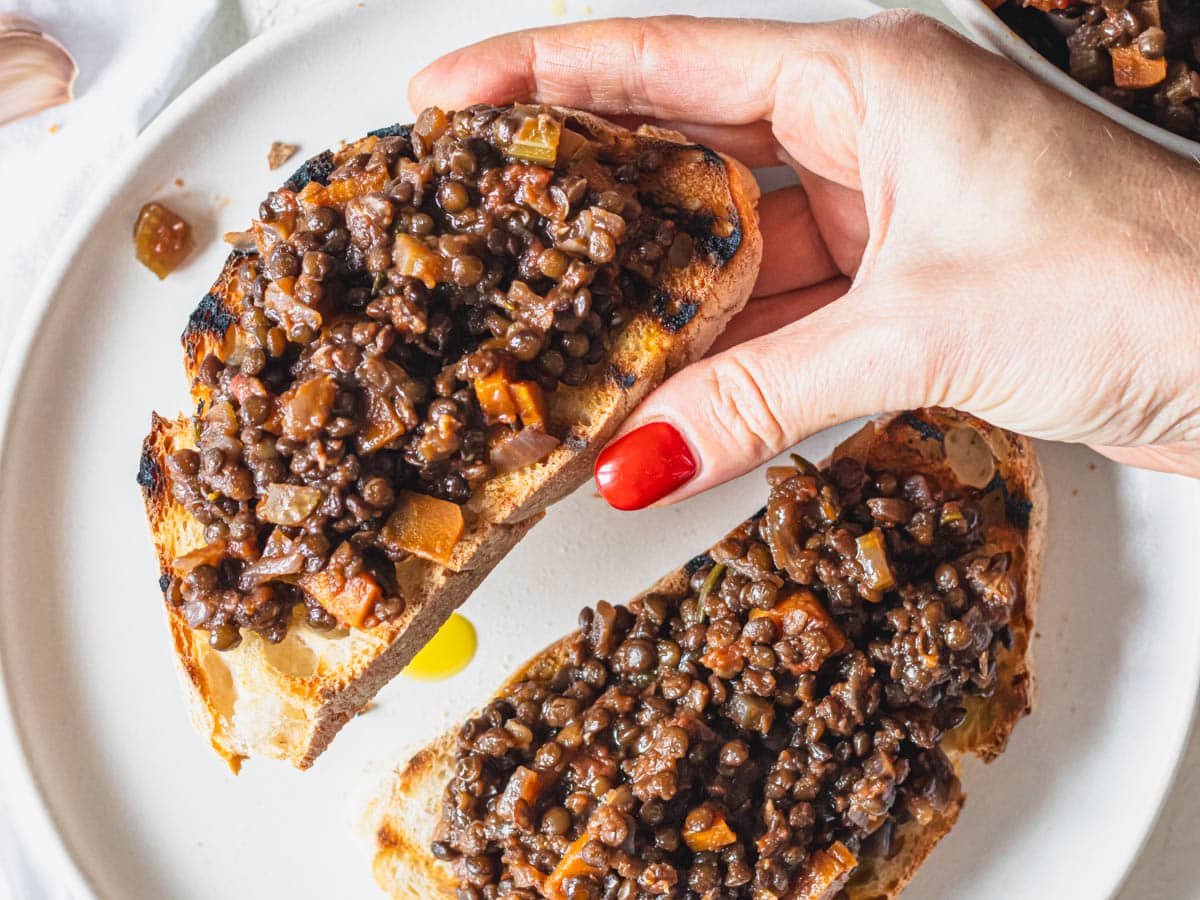
How to cook black lentils
US cups + grams measurements in the recipe box at the bottom of the page.
We start with a delicious soffritto or flavor base.
Heat the extra virgin olive oil in a large pot or Dutch oven. Add chopped onion, carrot, and celery and cook gently on medium-low heat for 10 minutes.
Tip: the vegetables should get soft and shiny but not brown or colored.
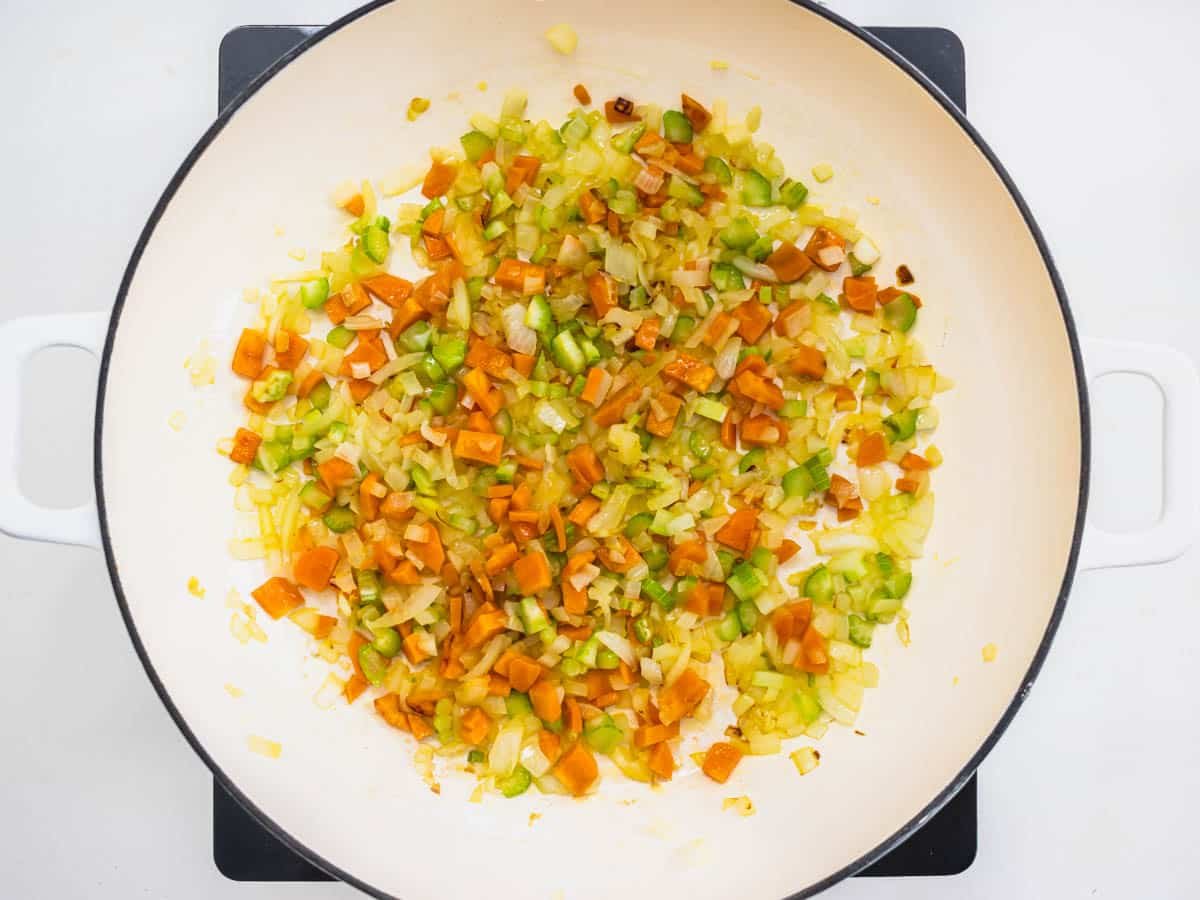
Rinse the black lentils under running water, then stir them in the vegetables.
Add vegetable broth, canned tomatoes, a clove of crushed garlic, a sprig of rosemary, and a bay leave.
Season with salt, black pepper, and red pepper flakes.
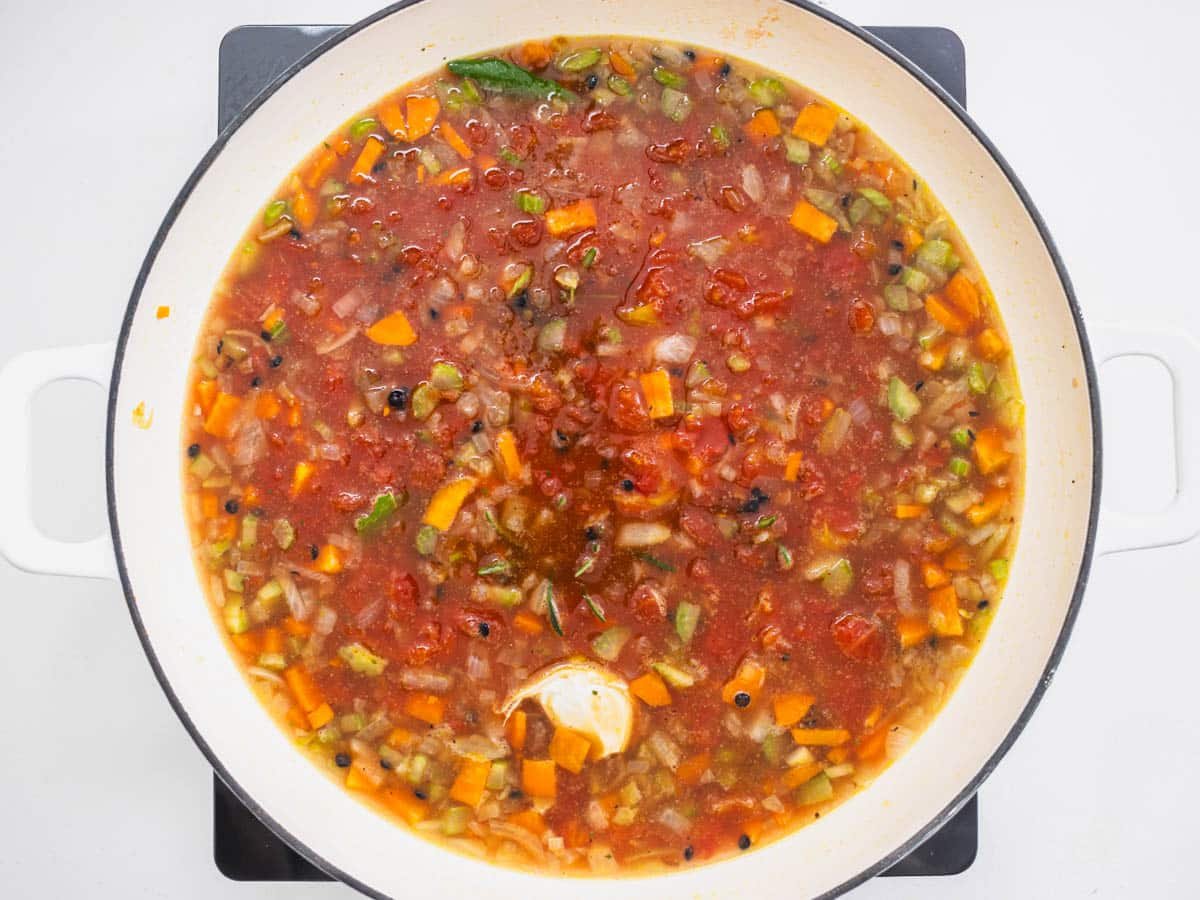
Now cover with a lid, bring to a boil, then crack the top open and simmer gently on medium heat for about 30 minutes or until the lentils are tender but with a bite.
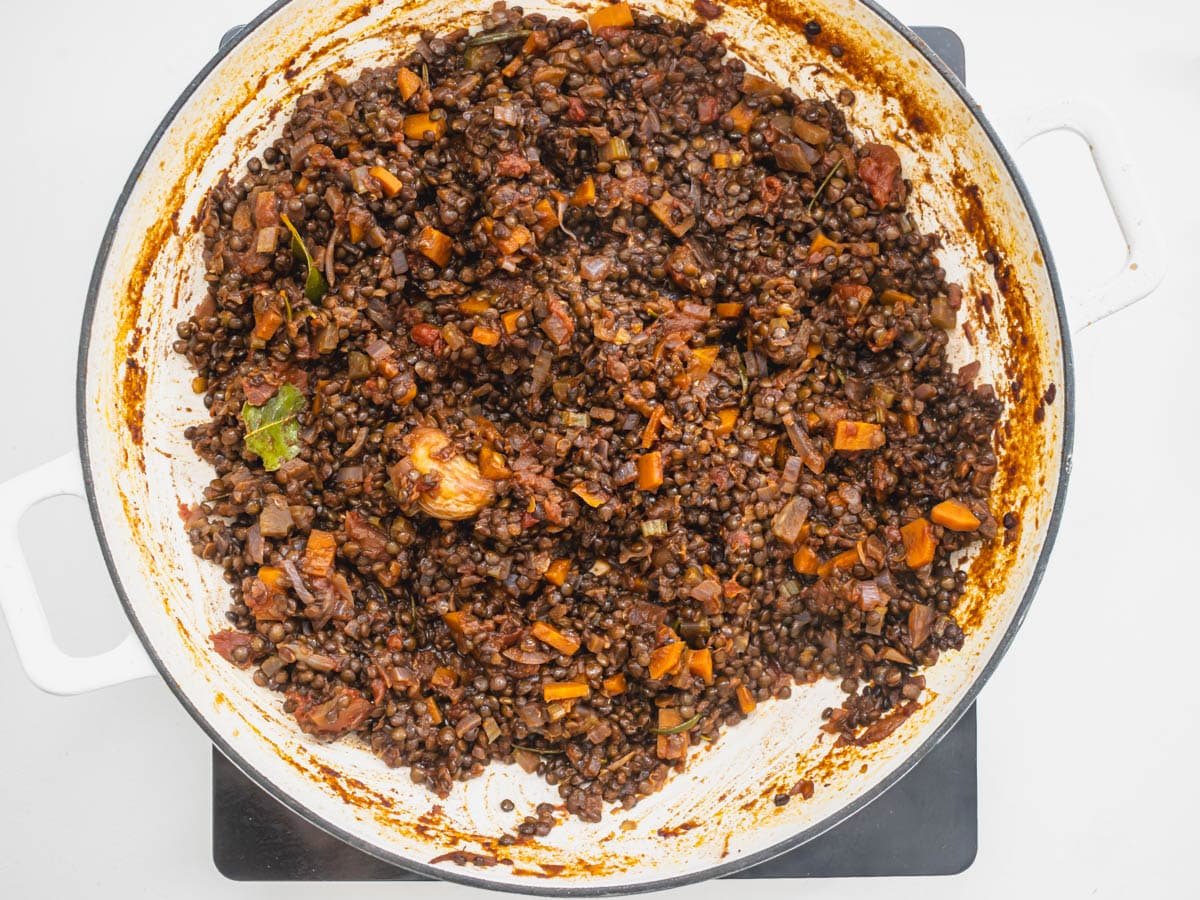
Serving suggestions
You can serve braised black lentils as an appetizer, side dish, or to add to your main dish.
Black lentils as an appetizer
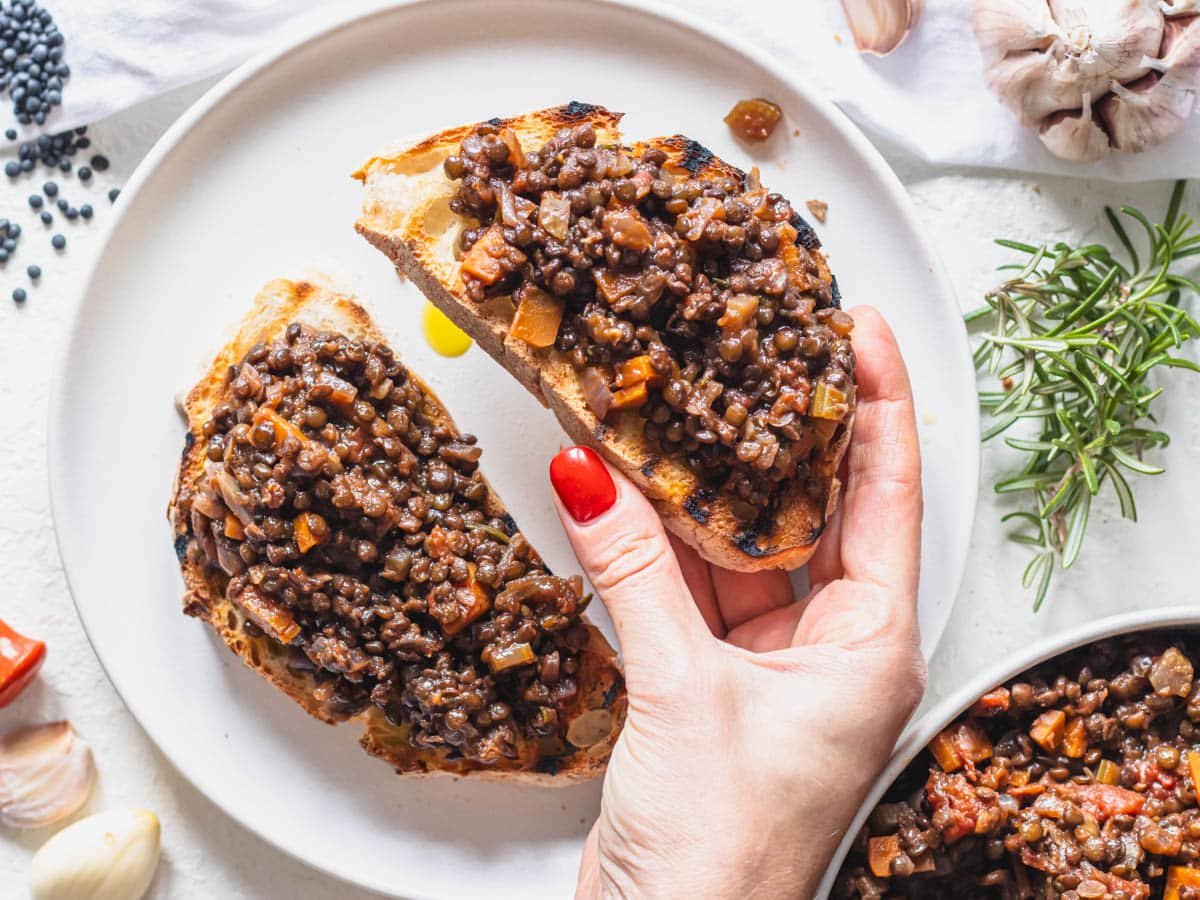
Make black lentil bruschetta by toasting some slices of crusty bread. Rub the warm toasted bread with garlic, add the lentils on top, and drizzle with extra virgin olive oil.
This is a simple and delicious way to enjoy this tasty legume.
Or you can have them as part of a larger appetizer with other spreads and sauces like:
Black lentils as a side dish
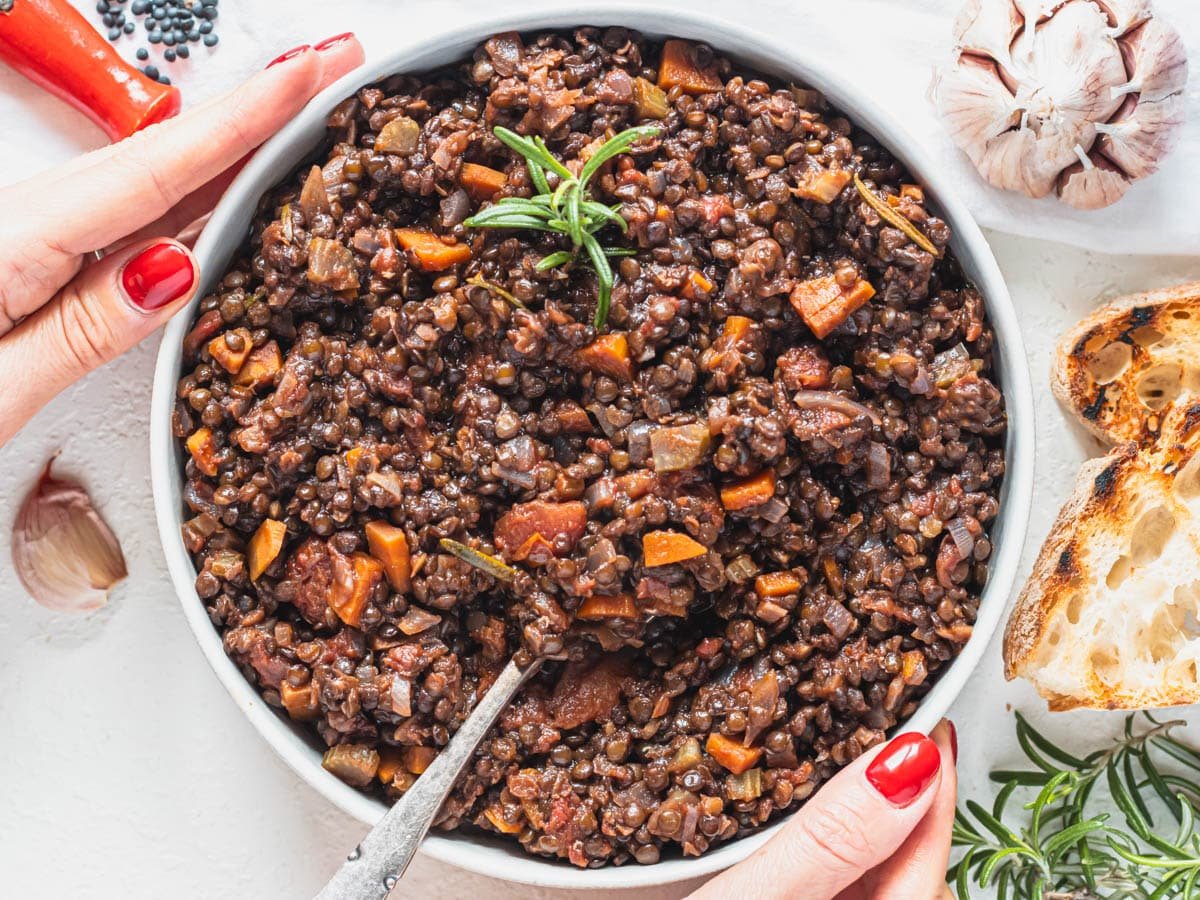
Braised black lentils are often eaten as a side dish in Italy, where people serve them next to their main dish with bread. Try them with:
- Crostini
- Bruschetta
- Focaccia
- Pita bread
- Couscous, rice, or farro
Variations
Boiled black lentils
Here’s our full guide on how to cook lentils. Check it out to learn everything about this delicious and wholesome legume.
The simplest way to cook black lentils is to cook them like pasta.
Bring a large pot of water or vegetable broth to a boil. Add a teaspoon of salt and stir in the black lentils you previously rinsed under running water.
Optionally, add aromatics like bay leaves, rosemary sprigs, an onion cut in half, a carrot, and a celery rib.
Boil uncovered for 15 to 45 minutes, depending on how dry your lentils are.
Taste to check for doneness, then when you are happy with their texture, drain the lentils and let them cool down at room temperature before storing them in the fridge.
Black lentils in the instant pot or pressure cooker
Like most other legumes, black lentils cook faster in a pressure cooker like an instant pot.
Rinse the black lentils with water and add them to the instant pot. Add water or vegetable broth and salt.
Optionally add aromatics like an onion (cut in half), carrot (whole), celery (a rib, whole), bay leaves, and rosemary.
Seal the lid and set the instant pot to “Pressure Cook.” Set the time to 10 minutes and start.
When done, allow the pressure to release naturally, then release the remaining pressure manually and open the pot.
Remove aromatics (they are safe to eat if you like) and let lentils cool down at room temperature before storing them in the fridge.
Questions
No, you can’t eat black lentils raw. You need to cook them first.
Black lentils and urad dal are NOT the same and belong to different botanical species.
Black lentils are part of the lentils family (Lens culinaris), like brown, green, or red lentils, and they are much smaller than urad dal.
Urad dal, often used in Indian and Asian cooking, is a bean, part of the Vigna family.
It’s also called Vigna mungo, black gram, or urad bean – although it is sometimes incorrectly sold as black lentil.
Visually, black lentils look like brown lentils but are more petite and black. Urad dal looks like mung bean or small black beans.
There is no need to soak black lentils. All you have to do is rinse them with water before cooking them.
Tip
Cooking time: cooking time can vary depending on how dry the lentils are and how long they have been sitting in your pantry.
The best way to determine if they are cooked is to taste them. They should be tender but have a slight bite.
If they are not done, add more water or broth and cook in 5-minute increments.
Storage & Make Ahead
Make ahead: black lentils are excellent to cook ahead of time and use for meal prep as they keep their shape well and can be stored for days.
Refrigerator: keep in an airtight container in the fridge for up to a week.
Freezer: store in a freezer-friendly bag and freeze for up to 6 months.
Thaw & Reheat: thaw in the refrigerator over several hours, in the microwave, or a saucepan with some water on the stovetop.
More cooking basics

How to Cook Black Lentils
Video
Ingredients
- 2 tablespoons extra virgin olive oil
- 1 onion chopped
- 1 carrot chopped
- 1 rib celery chopped
- 1 cup black lentils dry, not canned
- 4 cups vegetable broth or more if needed
- 1 clove garlic crushed
- 1 sprig rosemary
- 1 bay leaf
- 1 can (15-ounce) crushed tomatoes optional
- 1 teaspoon salt
- ⅛ teaspoon black pepper + ⅛ red pepper flakes optional
Instructions
- Heat 2 tablespoons extra virgin olive oil in a large pan. Add 1 onion, 1 carrot, and 1 rib celery (all chopped) and cook gently for 5 to 10 minutes, stirring often.
- Stir in 1 cup black lentils rinsed with water, then add 4 cups vegetable broth, 1 clove garlic (crushed), 1 sprig rosemary, 1 bay leaf, and 1 can (15-ounce) crushed tomatoes.Season with 1 teaspoon salt, ⅛ teaspoon black pepper, and a pinch of red pepper flakes.
- Now cover with a lid, bring to a boil, then crack the top open and simmer gently for about 30 minutes or until the lentils are tender.Tip: cooking time might vary. Taste to check for doneness and keep in mind that black lentils keep a nice bite.
- Serve as an appetizer, side dish, or to add to salads, soups, bowls, rice, or pasta.
Notes
Nutrition
If you liked this black lentil recipe, you might also enjoy:

Hi! We are Nico & Louise
We’re here to share delicious, easy, and healthy plant-based recipes (vegetarian & vegan) 🌿✨.
Welcome to our blog, we are glad you are here.




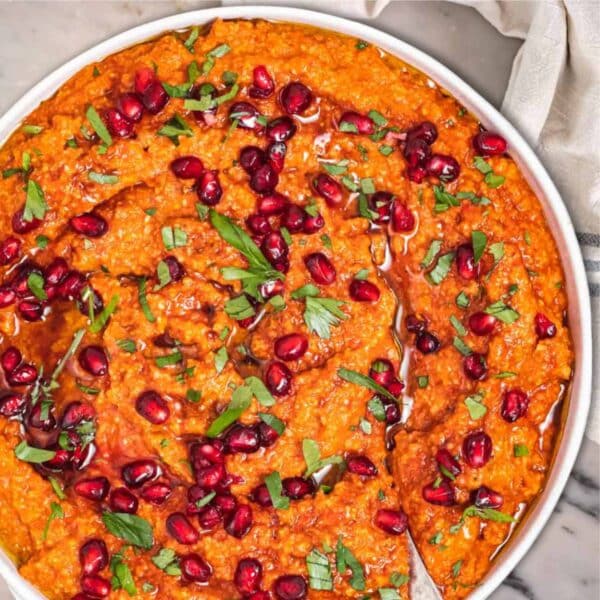
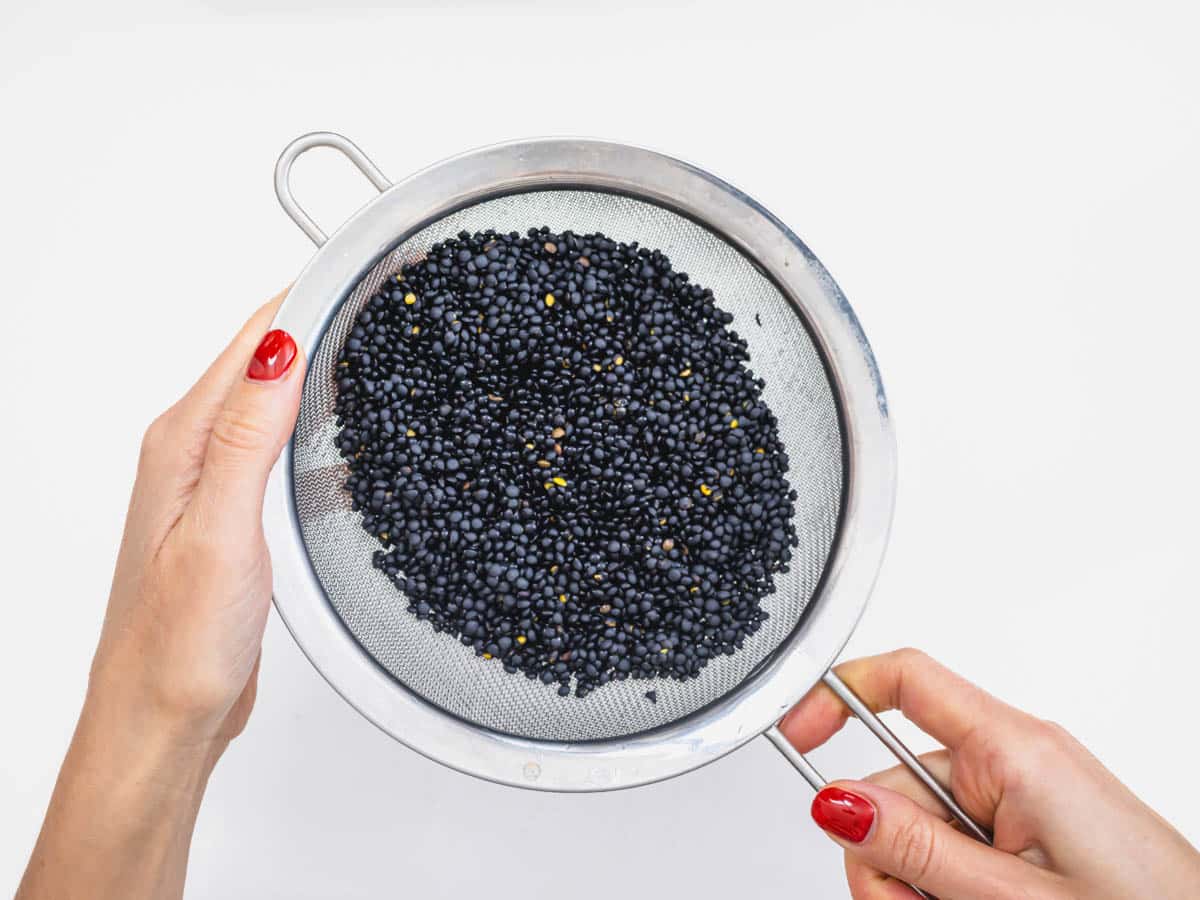
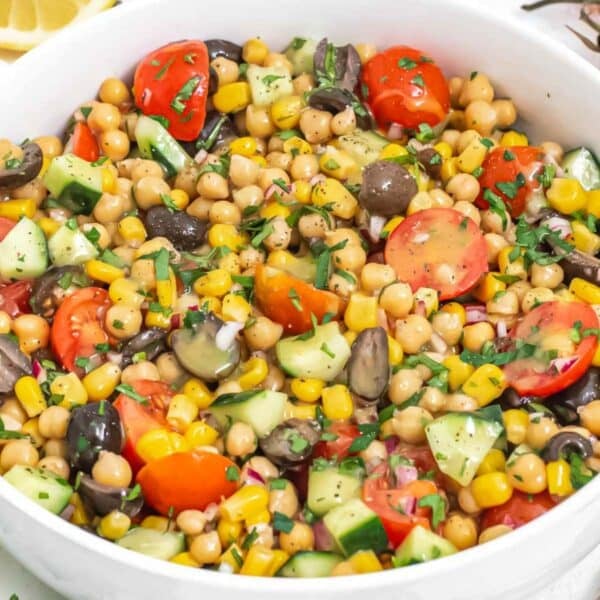
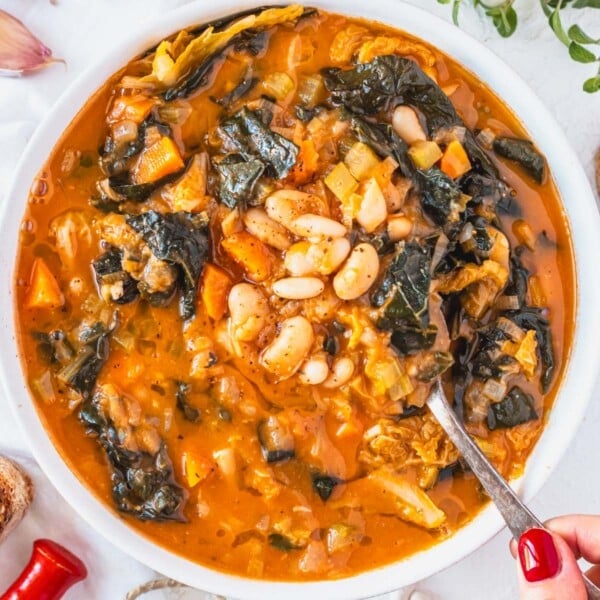
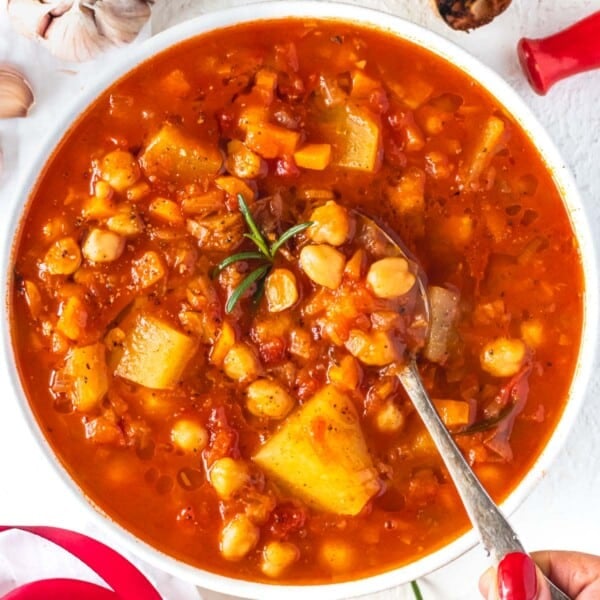
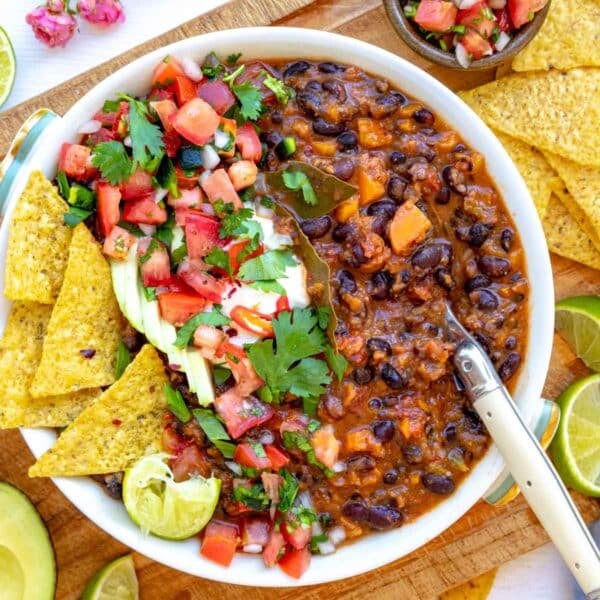
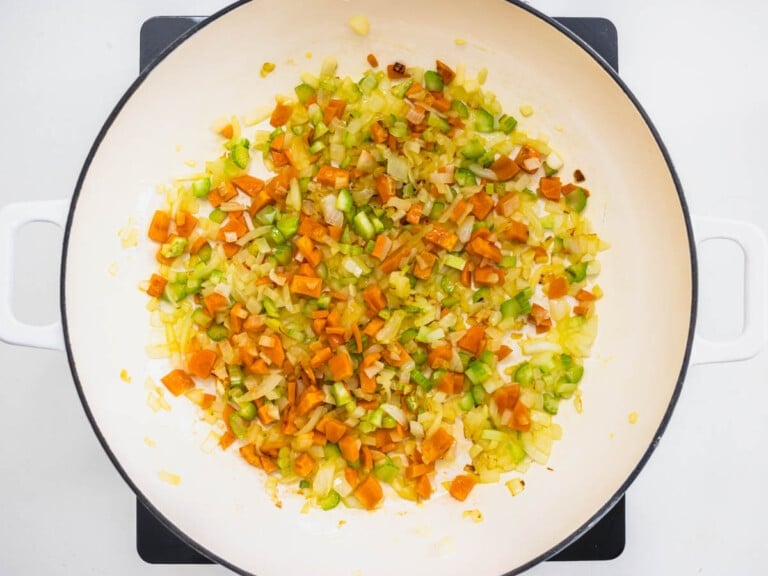
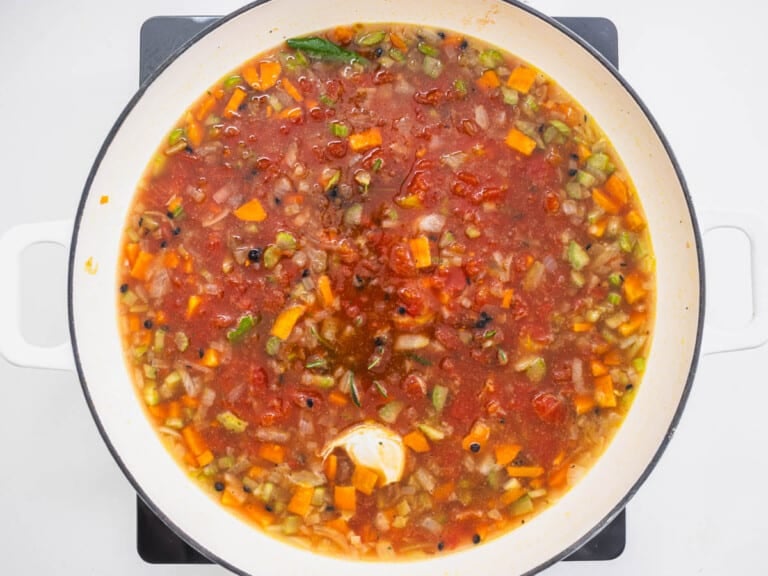

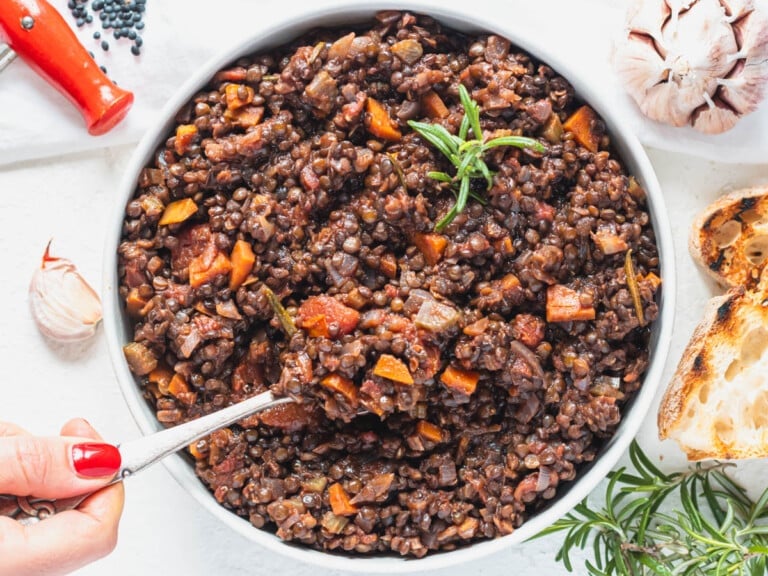




This recipe will change my life. I didn’t think I liked lentils and I’m trying to be vegan – I know how great they are as a plant protein and now I want to eat them A LOT! Thank you so much for this absolutely delicious meat substitute. I feel like it will be super versatile. I subscribed and created an account, and I can’t wait to try more of your food magic.
That’s fantastic news, Liza!! I’m super happy that you enjoyed the black lentils (it’s Nico’s grandma’s recipe) 🥰.
Thank you for your kind words, and for taking valuable time to leave a comment here! Kindest,
Louise
I cook my black/beluga lentils til just tender, drain, then spread on a large cookie sheet on paper towels. When cool, I remove the paper and put the tray in the freezer. Finally
I break up the frozen lentils and store in a silicon freezer bag where I can scoop out any amount of cooked lentils to add to bowls, sautéed greens, soups, salads, roasted veg, sandwiches, cottage cheese, enchiladas, baked sweet potatoes, anything really. Love them because they aren’t mushy & they go with everything [even scrambled eggs, when I still ate them].